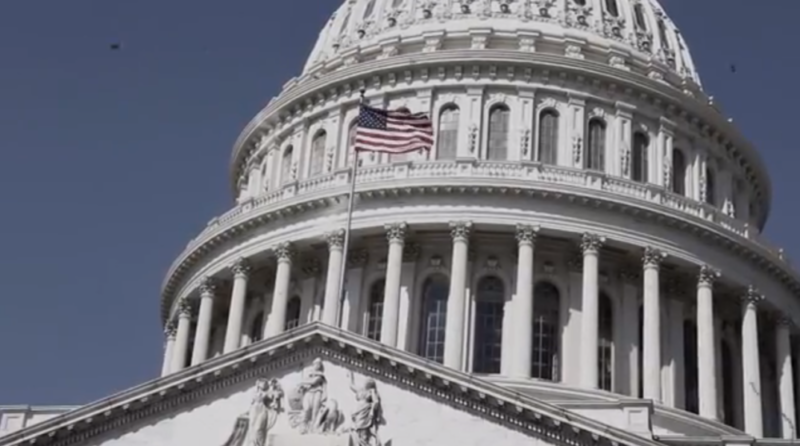Unprecedented.
It’s a word that’s been used countless times over the last year, with each new shock to the system.
The latest came Wednesday, when a mob of Donald Trump’s supporters, encouraged by the president, breached the U.S. Capitol while Congress was in the midst of a joint session to certify the results of an election that would mean his exit from the White House.
Despite the images showing people in costume, it was a serious crisis and a threat to democracy. Four people died.
The Capitol was eventually cleared and members of Congress returned to finish their work, constitutionally finalizing President-elect Joe Biden’s victory in the middle of the night.
But this will reverberate, and likely not just for the next two weeks until Trump leaves office. The violent, deadly insurrection was a coup attempt — something Americans are more used to reading about in foreign dispatches than seeing in their own country.
So once again we are seeing use of that word we’ve already used to sum up a global pandemic, the economic crisis that resulted, a movement to stop the murder of Black people at the hands of police and an election in which the loser long declined to concede: unprecedented.
It’s a way to sum up events for which we think there is no relevant example, and process something that make us feel like we are powerless to stop. They’re the kinds of events that leave us dumbfounded, as I felt on Wednesday afternoon.
But the truth is that the word is getting a bit old. For one, we’ve used it too much at this point, after all of 2020’s challenges. But there’s also a bigger point: The specifics of the coup attempt may be new and it was surreal to see happen, but many who were paying attention saw this one coming.
Trump has long talked about fomenting this kind of aggression, and took action to overturn the results of a free and fair election and bend the machinery of the state to his will immediately after he lost. There were debates about what to call it, but it clarified as Trump got more specific about Jan. 6.
It looked familiar to people who grew up under authoritarian regimes. Black Americans were frustrated, but not surprised. It wasn’t just that Trump’s four-year term seemed to build to this moment and that he and his supporters had telegraphed it. It’s also that the events reflected the divisions embedded in our society. As Baltimore Mayor Brandon Scott put it, “This is what white supremacy looks like.” And we’ve seen it in crisis after crisis in the last year. The juxtaposition of an armed, white mob easily storming into the Capitol, taking a seat in the speaker’s chair (both of them) and only facing an initial baker’s dozen arrests with the summer’s images of Black Lives Matter protestors being tear gassed, kettled and arrested en masse is too glaring. Given the events in Baltimore five years ago when the National Guard quickly descended on the city as a CVS burned following the death of Freddie Gray, it hits close to home.
Yet it’s also once again true that, with all of this reverberating, most Americans had to once again go about their own business of earning a living and solving problems, and that means going to work. So for another time this year, organizational leaders must respond.
As my colleague Paige Gross wrote in June, “Business is not as usual.” Companies cannot ignore the unrest that’s happening, and how it is affecting workflows and mental health.
https://twitter.com/messypixels/status/1346992491577401344
This can be tough for a leader seeking to motivate a team to deliver on a focused set of goals in a narrow market segment. As an editor for a local news outlet in a niche area of coverage, this journalist can sympathize. But one thing we can take from the tumult of this year is that we have recent examples to learn from.
If you’re concerned that teams might not be fully engaged, look back to how the pandemic’s fast shift to remote work meant that we had to give grace and how we made space during the election. And this being an event that is about the collective future of our country, let’s look back at what Technical.ly wrote as the pain and protests following George Floyd‘s death swelled:
- You must address your staff. Look here for a primer on how to do that. You cannot be silent on this issue.
- Understand the context and history. You have to help guide your team to understand this moment.
- Take action. The response can come in different ways, whether in making space for open dialogue and ensuring team members can vote.
That’s a baseline of responses that can be applied now, too. Addressing events and making space for listening is important. To be sure, words and approaches can differ to speak to this moment. And words matter — it was a mob mounting an insurrection and they’re terrorists — but they might not all be there.
As Shanna Hocking, founder of leadership consultancy Be Yourself Boldly and fundraiser at a large Philly nonprofit, told my Technical.ly editing colleague Julie Zeglen: “Leaders need to open the doors for dialogue, even when they don’t have all the words, and understand their team members might not have the words they need either.”
Use that dialogue as a basis for the action you take. It doesn’t have to all happen today, and in fact is likely more impactful if it’s planned and sustained. But the first step is to acknowledge it and gauge a team’s approach.
The events may be new, but the precedent is set by the way leaders show up for their teams everyday. As always, we’ll be here to share the other resources that we see.
Before you go...
To keep our site paywall-free, we’re launching a campaign to raise $25,000 by the end of the year. We believe information about entrepreneurs and tech should be accessible to everyone and your support helps make that happen, because journalism costs money.
Can we count on you? Your contribution to the Technical.ly Journalism Fund is tax-deductible.
Join our growing Slack community
Join 5,000 tech professionals and entrepreneurs in our community Slack today!




